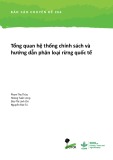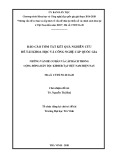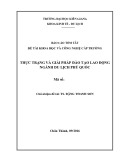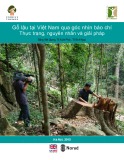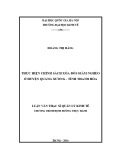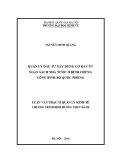
DEBATE Open Access
Challenges of controlling sleeping sickness in
areas of violent conflict: experience in the
Democratic Republic of Congo
Jacqueline Tong
1*
, Olaf Valverde
2
, Claude Mahoudeau
1
, Oliver Yun
1
and François Chappuis
1,3
Abstract
Background: Human African trypanosomiasis (HAT), or sleeping sickness, is a fatal neglected tropical disease if left
untreated. HAT primarily affects people living in rural sub-Saharan Africa, often in regions afflicted by violent
conflict. Screening and treatment of HAT is complex and resource-intensive, and especially difficult in insecure,
resource-constrained settings. The country with the highest endemicity of HAT is the Democratic Republic of
Congo (DRC), which has a number of foci of high disease prevalence. We present here the challenges of carrying
out HAT control programmes in general and in a conflict-affected region of DRC. We discuss the difficulties of
measuring disease burden, medical care complexities, waning international support, and research and development
barriers for HAT.
Discussion: In 2007, Médecins Sans Frontières (MSF) began screening for HAT in the Haut-Uélé and Bas-Uélé
districts of Orientale Province in northeastern DRC, an area of high prevalence affected by armed conflict. Through
early 2009, HAT prevalence rate of 3.4% was found, reaching 10% in some villages. More than 46,000 patients were
screened and 1,570 treated for HAT during this time. In March 2009, two treatment centres were forced to close
due to insecurity, disrupting patient treatment, follow-up, and transmission-control efforts. One project was
reopened in December 2009 when the security situation improved, and another in late 2010 based on concerns
that population displacement might reactivate historic foci. In all of 2010, 770 patients were treated at these sites,
despite a limited geographical range of action for the mobile teams.
Summary: In conflict settings where HAT is prevalent, targeted medical interventions are needed to provide care
to the patients caught in these areas. Strategies of integrating care into existing health systems may be unfeasible
since such infrastructure is often absent in resource-poor contexts. HAT care in conflict areas must balance
logistical and medical capacity with security considerations, and community networks and international-response
coordination should be maintained. Research and development for less complicated, field-adapted tools for
diagnosis and treatment, and international support for funding and program implementation, are urgently needed
to facilitate HAT control in these remote and insecure areas.
Background
Significant progress has been made towards the elimina-
tion of human African trypanosomiasis (HAT; sleeping
sickness), which has historically ravaged communities
with serious socioeconomic impacts. HAT is now con-
fined to specific geographic foci [1,2] characterized by
remoteness and neglect, and commonly in areas of poli-
tical instability and/or armed conflict, with the bulk of
the known disease burden in the Democratic Republic
of Congo (DRC) [3].
Sustained instability and violence have massive impacts
on the health of affected populations. In DRC and else-
where more people die of treatable diseases during con-
flict than they do of conflict-related injuries or casualties
[4-7]. This is partly because the already poor state of
health care services in these areas is further degraded to
where preventable diseases requiring only basic interven-
tions, such as malaria, measles, or diarrhoea, can run
rampant. HAT caused by Trypanosoma brucei gambiense
* Correspondence: jacquitong@yahoo.co.uk
1
Médecins Sans Frontières, Rue de Lausanne 78, 1211 Geneva, Switzerland
Full list of author information is available at the end of the article
Tong et al.Conflict and Health 2011, 5:7
http://www.conflictandhealth.com/content/5/1/7
© 2011 Tong et al; licensee BioMed Central Ltd. This is an Open Access article distributed under the terms of the Creative Commons
Attribution License (http://creativecommons.org/licenses/by/2.0), which permits unrestricted use, distribution, and reproduction in
any medium, provided the original work is properly cited.







